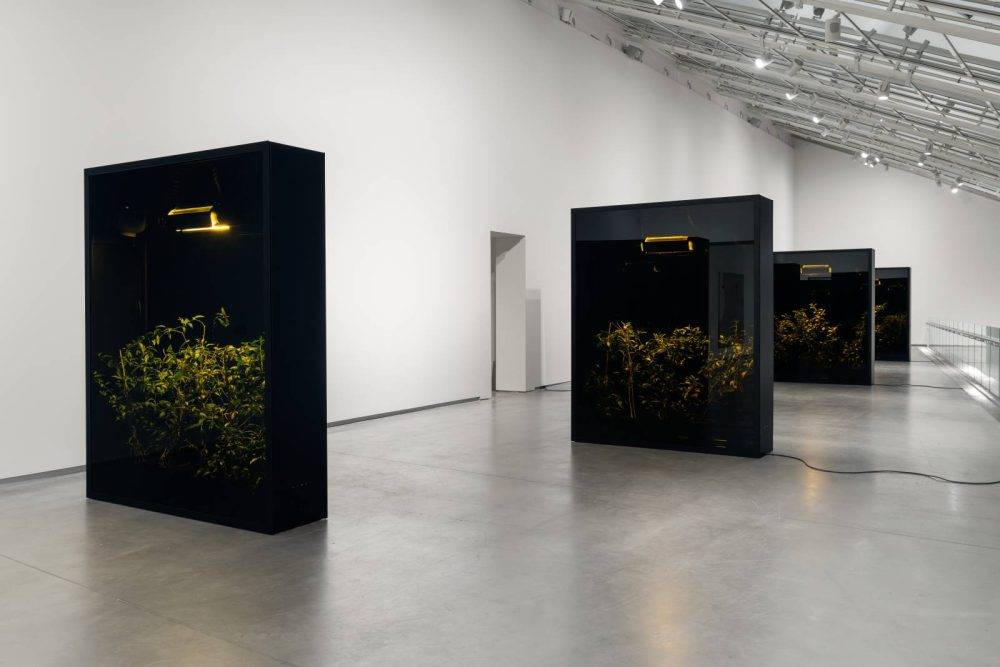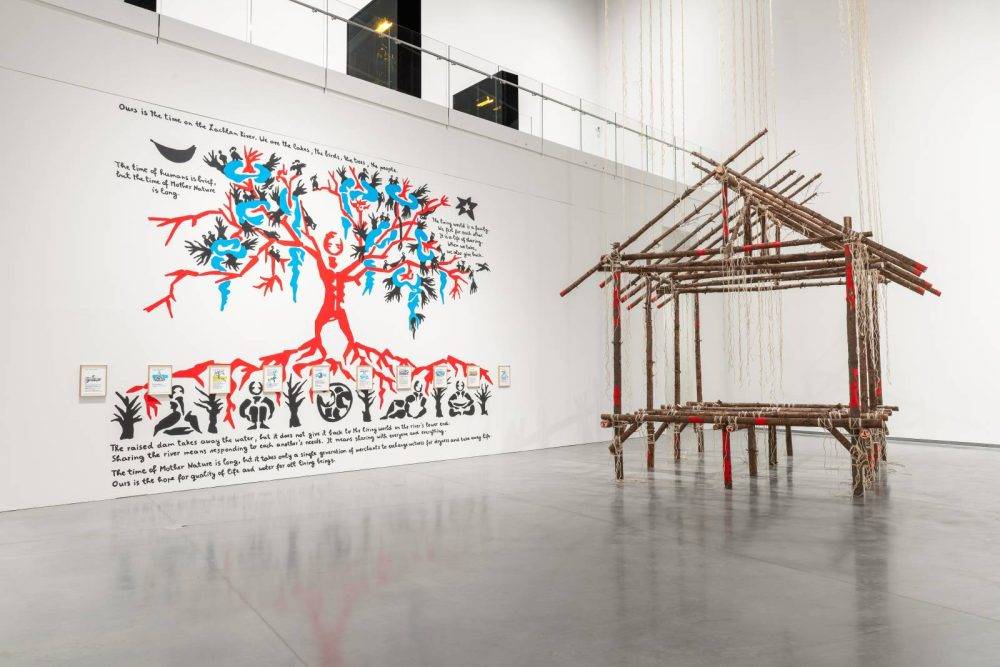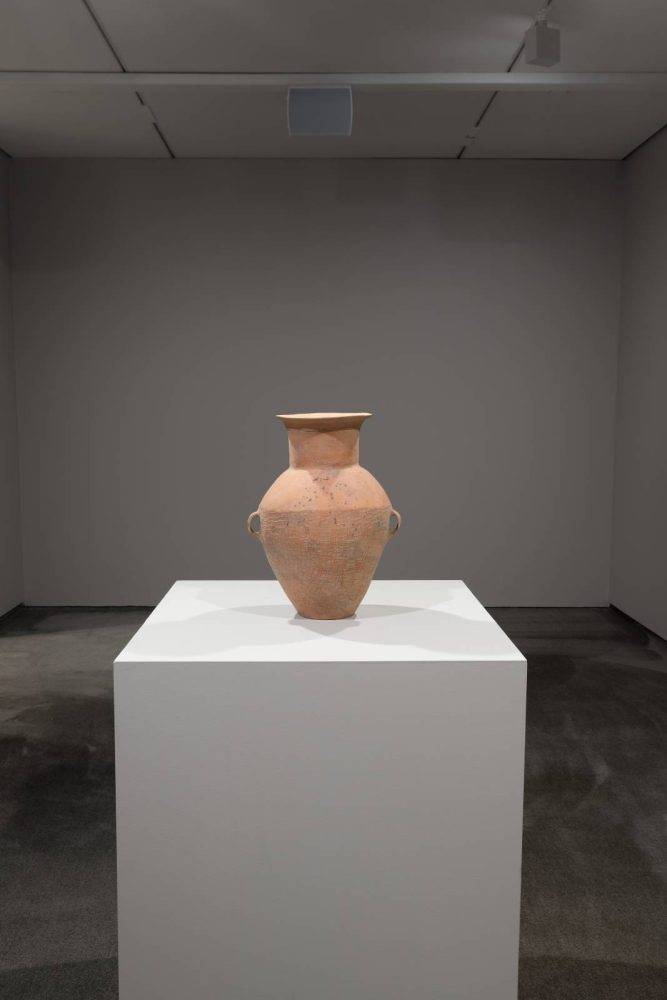Rivers, like mountains, are locations of the creativeness as a lot as they’re information of geography and political historical past.
Within the introduction to his 2014 e-book Congo: The Epic Historical past of a Folks, Belgian historian David van Reybrouck acknowledges this duality — let’s name it the magical actuality of rivers — in relation to Central Africa’s best river.
The Congo, tells Van Reybrouck, has a resonance that far exceeds its 4 700km size. The basin the place the river flows into the Atlantic Ocean is an enigma of color: a yellowish, ochre, rusty broth, he writes, that stretches westward for 800km in the course of the wet months: “That’s how a rustic begins: far earlier than the shoreline, thinned down with heaps and plenty of seawater.”
Curator Owen Martin was nonetheless residing in Cape City — a spot of epic mountains however meh rivers — when he learn Van Reybrouck’s broadly admired e-book. He discovered the connections the creator made between hydrology and historical past insightful and banked them for a attainable exhibition about rivers.
It took river time and a change in deal with to in the end realise that exhibition.
Martin lives in Oslo, Norway, the place he’s a curator on the Astrup Fearnley Museum.
Two years into his new function on the resourced non-public artwork museum with in depth holdings of blue-chip American and European artists, Martin has lastly realised his dream exhibition. Its realisation is partly a narrative of revival.

Amongst South Africans, Martin is finest identified from his five-year tenure because the likeable chief curator of Cape City’s Norval Basis.
After becoming a member of Norval from Zeitz MOCAA in 2017, Martin excelled at organising solo exhibitions spotlighting main African skills, amongst them Kenyan painter Michael Armitage and Ghanaian set up artist Ibrahim Mahama.
However the departure of Norval CEO Elana Brundyn in 2022 saddled Martin, a Canadian who got here into the orbit of artwork collector Jochen Zeitz in 2011, with new administrative duties. He usually regarded beleaguered. Early final yr, Martin ditched Cape City for a brand new job in Oslo.
Between Rivers is Martin’s first main thematic exhibition.
Group exhibitions are how aspiring curators sign their ambition. Throughout his time at Norval, such assertion exhibitions had been the province of curators reminiscent of Karel Nel and Portia Malatjie. However now, on the cusp of turning 40, Martin is lastly making his play.
Between Rivers is a considerate, literary-influenced exhibition that, whereas at instances recondite is, in the end, stimulating — even renewing this outdated hack’s sense of South African historical past.
The primary notable factor maybe is the title. Van Reybrouck could have recommended an thought to Martin, nevertheless it was the Kenyan creator Ngugi wa Thiong’o’s 1965 novel The River Between that impressed his exhibition’s title.
The Norwegian geographer Terje Tvedt, whose non-fiction e-book The Nile (2021) is each a sweeping historical past and journey narrative of the world’s longest river, additional expanded Martin’s pondering.
The information introducing the exhibition is prefaced by a quote from a 2022 essay by Canadian poet and author Lisa Robertson. “A flood is what flows says the etymology, the place the flowing is in extra,” it reads. “However it’s by flooding {that a} river constructs its kind; kind is the remnant of extra, the despair of content material, the failure of escape.”
The epic floodplain of the Congo River is visible proof of this explicit river’s geometry. Otherwise put, the river turns into the ocean, however the sea can also be the reminiscence of a river.
Between Rivers gathers works by 12 artists whose work is engaged in “representing a topic that’s without delay mounted and relentlessly in movement”, as Martin phrases it within the exhibition information.
His line-up pushes in opposition to his employer’s masculine, Euro-American gathering focus, favouring as a substitute a worldlier, gender-sensitive roster of contributors.

To make certain, the exhibition contains main American artists reminiscent of Zoe Leonard and Senga Nengudi, in addition to revered Europeans like Alex Ayed, Marjetica Potrc and Cato Løland — the one Norwegian on it. However Between Rivers additionally contains works by artists from Columbia, Egypt, India, Morocco, Pakistan, South Africa and Vietnam.
Water usually mediates identification; it has the capability to erase it, too. The Franco-Tunisian artist Alex Ayed has embraced the liberating potential of water. Final yr, Ayed set off on a multi-year, round-the-world crusing expedition. His new aquatic identification was heralded with an exhibition.
“In up to date societies, contemplation — of clouds, the wind, a chook flying overhead, different sensory observations — appears to be just for the dreamer, however in actuality, it’s what’s most important for anybody residing at sea,” Ayed defined in a press release prefacing final yr’s exhibition at Paris’s Louis Vuitton Basis.
“These parts, which on land can be described as ‘poetic’, are very important for the sailor … [enabling them] to reside in an surroundings that’s as hostile as it’s elegant.”
Martin’s exhibition probes this duality, juxtaposing works that explicitly invoke rivers as social entities with works that favour extra “indirect methods”, to borrow an expression from musician and artist Brian Eno.
The exhibition opens with excerpts from Zoe Leonard’s Al río / To the River (2016 to 2022), a photograph essay depicting facets of life alongside the Rio Grande. The river demarcates the US’s contentious border with Mexico, the place it is named Río Bravo.
Leonard’s black-and-white images are repetitive and matter of truth. Six images document pleasure seekers gathered at a artifical place alongside a stretch of the river not dissimilar to the industrialised rusticity of the Limpopo at Beit Bridge. A grid of 34 pictures reveals a helicopter surveilling one thing or somebody.
The exhibition shortly jettisons this social strategy in favour of works that “harness the poetic and imaginative potentialities” of rivers.
The wood-and-rope construction on the centre of Slovenian artist Marjetica Potrc’s set up is a immediate to think about novel “Earth jurisprudence”, which argues for extending authorized rights to pure entities reminiscent of rivers.
The Home of Settlement Between People and Earth, as Potrc’s work is titled, was made in collaboration with Ray Woods, an Aboriginal elder, for the twenty third Biennale of Sydney in 2022. Earth jurisprudence has a robust foothold in Australia.
Potrc’s work is amongst a handful on the present with pre-approved standing.
Moroccan artist Hicham Berrada’s Mesk-ellil (2019), seven tinted-glass terrariums housing rising examples of night-blooming jasmine, was proven at collector François Pinault’s non-public museum in Venice, Punta della Dogana, in 2019.
Ditto the Indian artist Reena Saini Kallat, whose trio of sound sculptures, Refrain I-III (2015 to 2019), appeared within the fifteenth Sharjah Biennial within the United Arab Emirates.
Kallat’s outstanding and joyous works revive the type of pre-radar listening gadgets utilized in earlier Twentieth-century army surveillance. Every emits a cacophony of birdcalls linked to avian species inhabiting tumultuous border zones: Israel-Palestine, Eire-UK and Mexico-US.
The invocation of sound as artwork materials can also be central to James Webb’s contribution to Between Rivers. “What had been you made to include?” asks voice artist Lesoko Seabe of a 4 000-year-old Neolithic clay vessel from the Higher Yellow River area of China put in on a plinth and proven alone in a carpeted room. Extra questions observe. “What experiences do your scars communicate of?”
The questions, numbering 172, had been drafted by Webb, a Cape City artist now residing in Stockholm, Sweden. Cumulatively, the questions invite the viewer-listener to think about the varied attainable social and cultural meanings and resonances of the article being confronted.
In June, Webb staged an identical work in Basel, Switzerland. An outside speaker put in on the historic Mittlere Brücke (Center Bridge) over the Rhine performed a collection of probing questions voiced by Victoria Davies.
Webb’s work is certainly one of two notable new commissions for Martin’s present. The opposite is a triangular tunnel constructed into an inside wall of the museum.
“Hazard lurks in darkness,” says a personality in Ngugi’s The River Between.
The Columbian artist Delcy Morelos flirts with this concept in her cinnamon-and-clove-scented grotto piece Profundis (2024). You scent the work earlier than you see it, which is barely, its darkish inside unlit.
The piece incorporates soil harvested from the Glomma, Norway’s longest river.
The river was as soon as used to drift felled timber to market.
There’s an indirect South African connection — Norwegian timber was a staple for the large Dutch cargo ships of the sixteenth and seventeenth centuries, a few of which plied the route across the Cape.

The ocean is a recurrent cipher in Martin’s exhibition about rivers. It’s most explicitly signalled in a sampling of Ayed’s tricksy apply. Martin has included 4 of Ayed’s painting-like issues produced from sailboat materials, in addition to an unregistered emergency position-indicating radio beacon, an insect preserved in olive oil and a taxidermied seagull.
The summary work, austere but visually tactile, every compel. They’re profitably proven along with the most important of Nengudi’s 4 water sculptures.
A part of a cohort of gifted California artists to emerge within the later Sixties, Nengudi is the unique slay queen — and likewise spirit mom of export-quality South African artists like Dineo Seshee Bopape and Turiya Magadlela.
Shunning the agit-prop Civil Rights artwork produced by her friends, Nengudi favoured object-related efficiency and daring sculptural experimentation. Her earliest resolved works concerned trapping water dyed with meals colouring in heat-sealed vinyl varieties.
Began within the late Sixties and impressed by a yr spent finding out in Japan, Nengudi stopped making these ephemeral, and typically participatory, works after the introduction of the industrial waterbed within the early Seventies.
Though reconstructions of the misplaced originals, Nengudi’s “water compositions” are however the oldest works on present. They function as a form of ballast, reworking water — that key ingredient of rivers — right into a magical actuality, current, trapped however nonetheless potent.